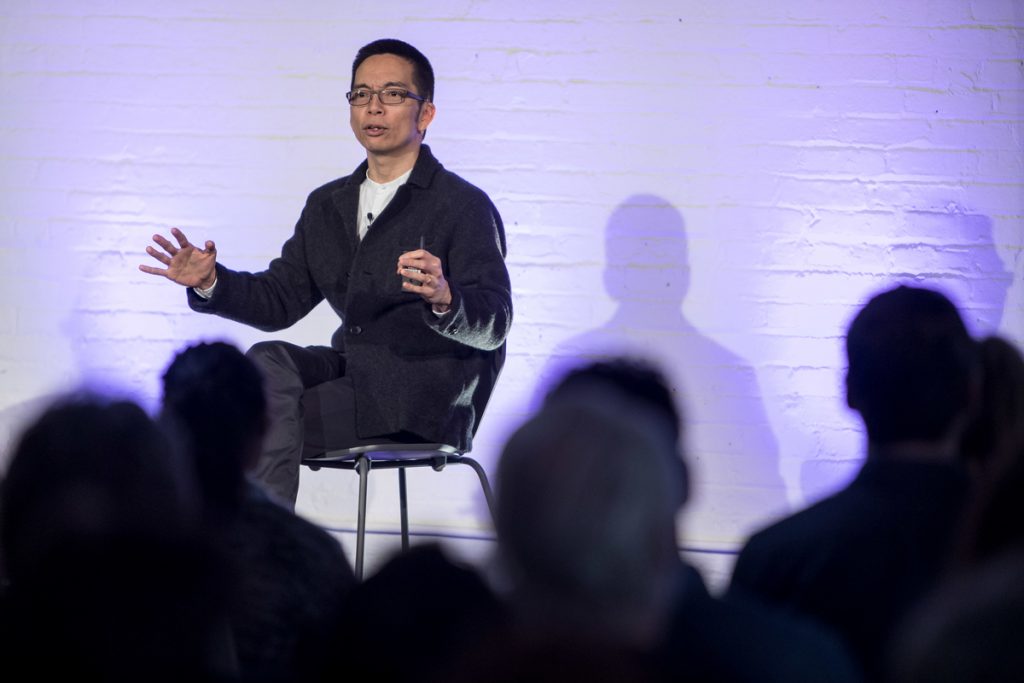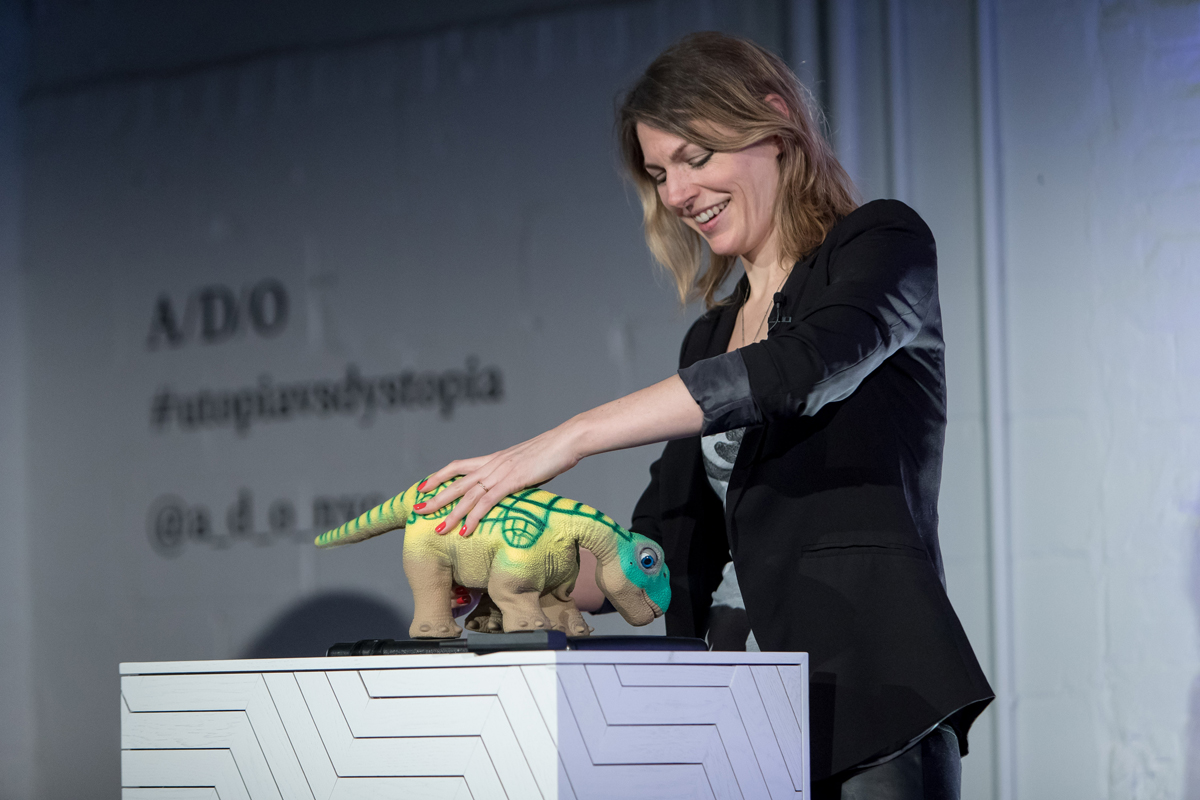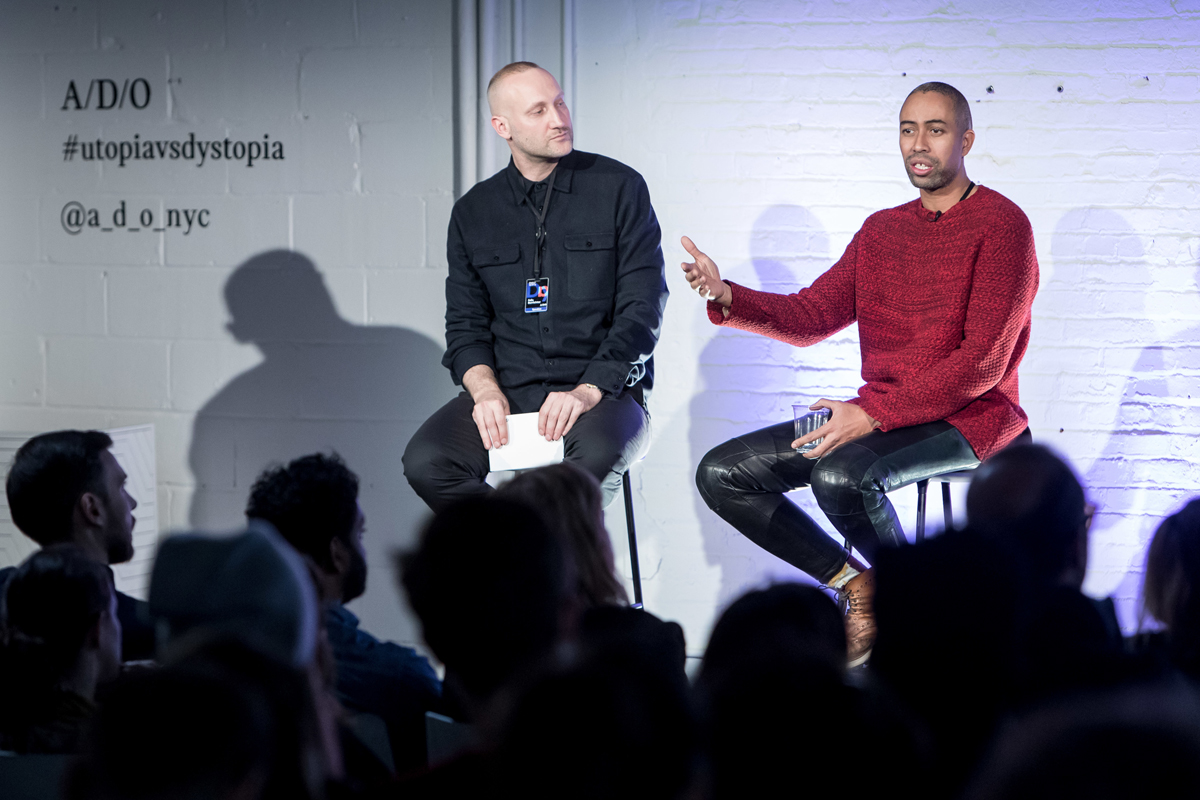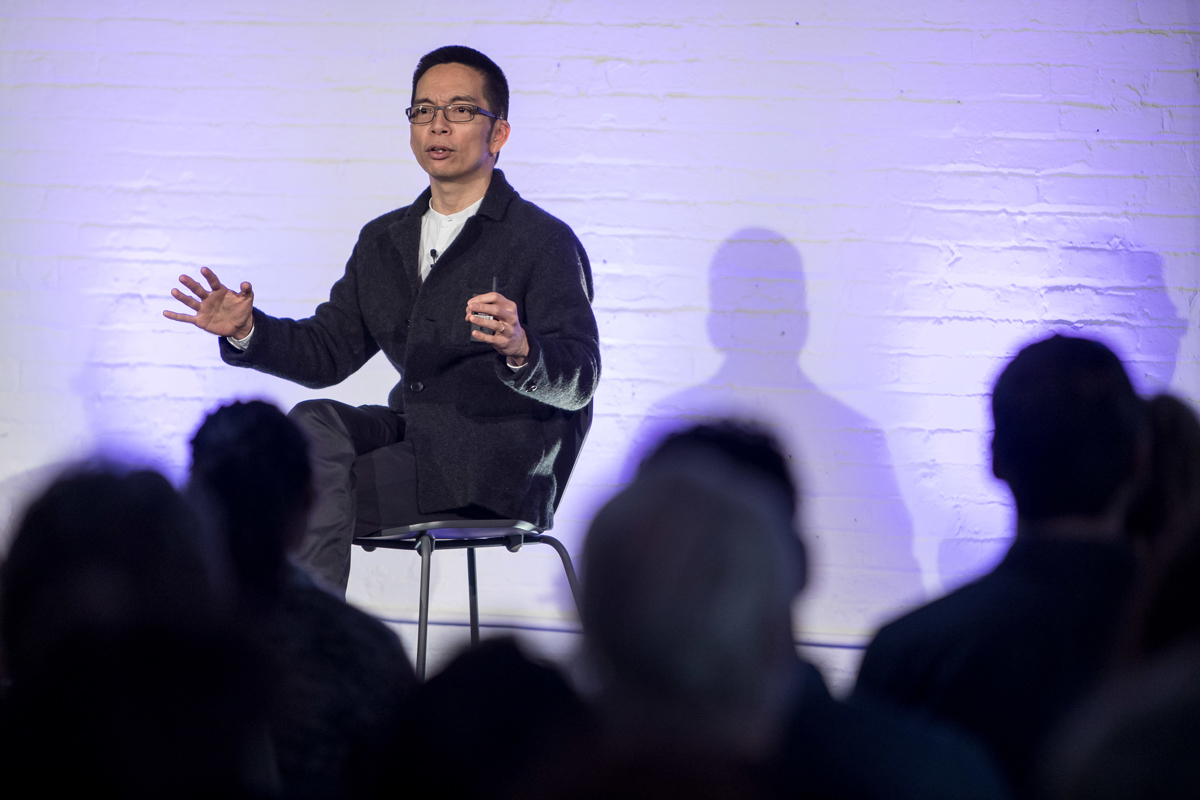A/D/O Design Academy’s “Utopia vs Dystopia”
Celebrating creative, scientific and inspiring makers and thinkers at the impressive new Greenpoint space


We were quick to visit A/D/O‘s recently renovated Greenpoint space when it was unveiled, but our return this past weekend offered an opportunity to see it in action as the design community center it was always imagined to be. Attendees were eager to learn and be inspired by each other and the panelists who took part in the inaugural Design Academy—a forward-looking and workshop oriented edictaional solution organized in to trimesters. The season began with this three-day festival exploring the theme “Utopia vs Dystopia: Designing Our Imagined Futures”—a concept that was especially poignant during 26-29 January. Some speakers discussed their work in depth, while others were more philosophical, but overall the mood was one of hope—as well as a call to action.

With speakers including artists, designers, executives, musicians, writers and more, each discussion was wildly different—from topic to mood. Standouts were countless. One fascinating talk was with Kate Darling who explained the research she’s part of at MIT regarding robots and empathy. Essentially, robots cannot truly be “harmed,” but because they are oftentimes personified, people can get upset when they are “hurt.” One study includes how people react to this—do people react more strongly if the robot is given a personality, a story, a history? Perhaps even more interesting, they are studying if it would benefit society to allow deviants to play out their fantasies with robots.
The discussion with Marcus Fairs, Constantin Boym, Justin McQuirk and Cynthia Smith was politically-charged and very interesting; from Brexit to immigration and the changing perception of design across the United States.

Stephen Burks (who is also the current artist-in-residence at A/D/O) explained how several luxury brands were ripping people off—both makers and customers—and his ability to cut them out of the equation. Essentially aiming to empower designers and artisans in various African countries, Burks insists that Africa and Indonesia could be the next wave of design—the same way that Italy became a force in the ’50s. With the skills, technique and talent already apparent, Burks says the hurdle now is carving a path into the industry.
The Creators’ Project’s all-women panel explored everything from motivation to ideas about gender. Katie Stout—whose art focuses on gender, domesticity and function—says her work can sometimes seem frivolous, but “sometimes the seemingly senseless things end up making the most sense” (especially during tumultuous times). Curator Jane Withers, who discussed her work with Selfridges (whose aim was to educate about ocean waste), says she is motivated by history, curiosity and a good old-fashioned challenge. She often asks herself, “Who’s done it better than we’ve done it today?”

Crowd favorite John Maeda (designer and technologist) told his audience what’s most important to him: inclusivity. So crucial to his life and work, Maeda had it added to his job title at Automattic, where he is the Global Head, Computational Design and Inclusion. He said that capital is great—if you have access to it, and currently it’s denied to those who look or behave differently. Maeda says, “The technology is not inclusive,” and his job (as well as the positions he holds on various boards) is to speak up—oftentimes when he sees a room full of white men. He says, “It’s not a good strategy for a business or a society to be exclusive.” By exploring education, aging, how to see coding and website innovation as a kind of art, while also remaining passionate about making physical things, Maeda managed to make very specific arguments, while speaking to universal values.
Keynote speaker David Byrne questioned the image of the futuristic city being “utopia vs dystopia” and answered in a way many of us agree with: it’s impossible to know. While the unknown can be scary, Byrne kept it humorous and really focused on his work with the color guard. He talked about not knowing how a project is going to pan out, or what it will mean to others, until it’s done—and that was also true of the color guard. Despite being obsessed with it, only later did he understand that his passion for the project was because it’s one of the few activities in this country that all kids can be part of—no matter their gender, race, size or nationality.

Of course, the three days of the festival were unavoidably high tension, pertaining to the country’s politics. Perhaps surprisingly, the overarching anger and anxiety led to open discussion and an acceptance of sometimes feeling uncomfortable in order to make change.
Images courtesy of Gary He












